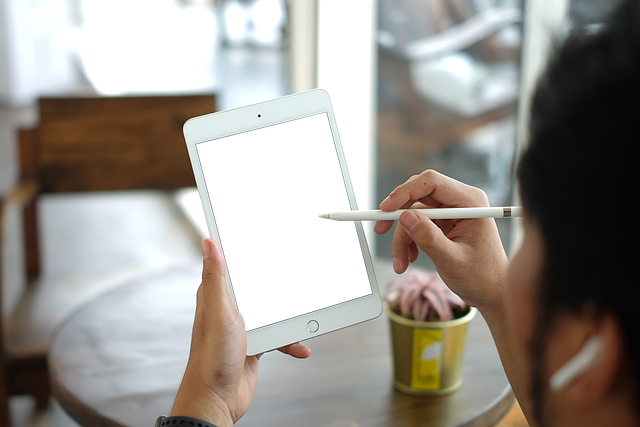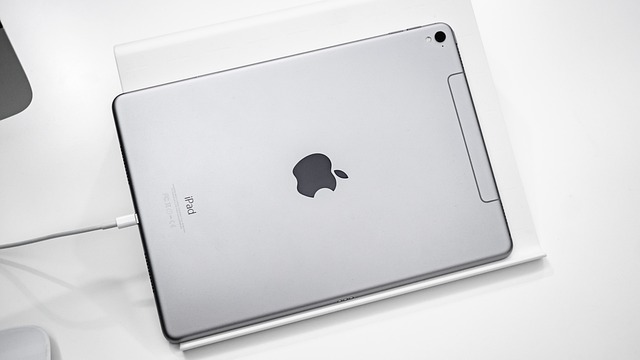If your iPad starts showing signs of weak battery performance, such as shorter usage times or unexpected shutdowns below 20% charge, it's time to consider replacing the battery. This can be done either by a professional service with genuine parts or by following a detailed guide for a DIY replacement. The process involves disconnecting the iPad's four connectors from the logic board, removing ten screws holding the battery in place, and carefully installing a new, compatible battery with proper alignment. Post-installation, it's crucial to calibrate the battery by charging it for at least two hours. Regularly checking the battery health through Apple's 'Battery Health' feature is vital for maintaining optimal performance and ensuring the longevity of your device. Addressing a weak battery promptly can prevent data loss and provide consistent access to applications and media. Remember to purchase a high-quality, compatible battery from a reputable supplier that offers safety certifications and a warranty to safeguard your investment. For those who prefer professional help or lack the confidence to perform the replacement themselves, authorized service providers are available to ensure expert care using authentic components and specialized tools. This will not only resolve the issue but also promote sustained peak performance and reliability for your iPad.
Navigating battery issues in your iPad can be a straightforward process with the right guidance. Whether you’re experiencing reduced charge duration or frequent shutdowns, understanding how to replace an iPad battery effectively is crucial. This article offers five practical tips for resolving battery replacement challenges. From assessing your device’s battery health to identifying high-quality replacement parts, and learning to troubleshoot post-replacement, these steps ensure your iPad maintains optimal performance. Additionally, we’ll explore when professional assistance might be necessary for a seamless replacement experience. Dive into the nuances of replacing an iPad battery with confidence, and keep your device powered through its next chapter.
- Understanding Your iPad's Battery Health: Signs Indicating a Replacement May Be Needed
- Step-by-Step Guide to Safely Replace an iPad Battery
- Troubleshooting Common Issues After an iPad Battery Replacement
- Tips for Ensuring Battery Replacement Part Quality and Compatibility with Your iPad Model
- How to Monitor Battery Performance Post-Replacement to Avoid Future Problems
- Seeking Professional Help: When to Consider an Authorized Service Provider for Your iPad Battery Replacement
Understanding Your iPad's Battery Health: Signs Indicating a Replacement May Be Needed

When your iPad’s performance begins to wane, it might be time to consider a battery replacement. Monitoring your device’s battery health is crucial for maintaining optimal functionality. Apple provides a ‘Battery Health’ feature within the Settings app, which assesses the maximum capacity and peak performance of your iPad’s battery. A declining maximum capacity percentage indicates that the battery is aging and may soon require replacement. Additionally, if your iPad shuts down more frequently and under less demanding conditions than usual—such as when the charge level drops below 20% rather than holding out until a lower threshold—it’s a clear sign that the battery’s performance has degraded. Replacing an iPad battery can significantly revitalize your device, enhancing its ability to hold a charge and operate efficiently. It’s advisable to address this issue promptly to prevent data loss due to unexpected shutdowns and to ensure you have uninterrupted access to your applications and digital content. If you’re noticing these signs, it might be time to replace your iPad battery. Professional repair services can diagnose and execute the replacement effectively, restoring your device to its full potential. Regularly checking your iPad’s battery health will help you stay ahead of potential issues, ensuring a seamless and consistent user experience.
Step-by-Step Guide to Safely Replace an iPad Battery

When faced with a depleted iPad battery, replacing it can revitalize your device’s performance. To ensure a successful and safe replacement, follow this step-by-step guide with precision. Begin by gathering the necessary tools: a screwdriver set with Pentalobe and Phillips #00 screwdrivers, a plastic opening tool, a spudger, and tweezers. Safety is paramount; make sure to discharge your iPad completely before commencing the process. Next, remove the two screening corners and gently pry open the device, taking care not to damage any cables or connectors. Carefully detach the battery connector and the three other connectors from the iPad’s logic board. Proceed to remove the ten screws securing the battery to its position and lift out the battery assembly. Before installing a new battery, visually inspect it for any signs of damage or wear. Once you’ve confirmed the new battery’s integrity, align and place it in position, ensuring the plus and minus ends correspond with the iPad’s battery contacts. Reattach the battery connector, followed by the three other connectors, and then reinstall the ten screws to secure the battery in place. After reassembling the iPad, charge it for at least two hours before using it to allow the battery to calibrate properly. By following these steps methodically, you can replace your iPad’s battery safely and effectively, restoring its lifeline without any unnecessary complications.
Troubleshooting Common Issues After an iPad Battery Replacement

When replacing an iPad battery, it’s crucial to follow the correct procedures to avoid potential issues that may arise post-replacement. If you encounter troubles after such a replacement, start by verifying that the battery is properly seated within its compartment. Loose connections can lead to inconsistent charging or power output, potentially draining the battery faster than expected. Utilize a clean and dry anti-static mat while handling the device to prevent electrostatic discharge that might affect the sensitive components of your iPad.
Should your iPad not turn on or respond as anticipated after replacing the battery, ensure that the device is charged for at least 2 hours. Connect it to its original charger if possible, as some third-party chargers may not provide the correct voltage required by the iPad. Additionally, check for any software updates available for your device, as these can resolve persistent battery issues and improve overall performance. If the problem persists, consider consulting with a professional or reaching out to Apple Support for further assistance. They can guide you through additional troubleshooting steps or confirm if a warranty replacement might be necessary. Remember to document any symptoms and steps taken during your troubleshooting for clarity when seeking support. Replacing an iPad battery is a common task, but ensuring the device functions correctly afterward is equally important. With careful attention to detail and proper procedure, you can resolve most post-replacement issues and enjoy extended battery life from your newly serviced iPad.
Tips for Ensuring Battery Replacement Part Quality and Compatibility with Your iPad Model

When addressing issues with your iPad’s battery, ensuring that the replacement part is of high quality and compatible with your specific model is paramount to maintain optimal performance and longevity post-replacement. Opting for genuine or high-quality third-party components is a smart choice when you need to replace your iPad battery. Genuine Apple batteries are designed to work seamlessly with their devices, offering reliable energy output and ensuring the health of your iPad over time. If opting for a third-party option, thorough research is essential; seek out reputable manufacturers known for their quality and adherence to industry standards. Verifying compatibility with your exact iPad model is crucial; each model has distinct battery configurations, and using an incorrect battery can lead to malfunction or damage. To confirm compatibility, refer to the specifications provided by the battery supplier and cross-reference them with your iPad’s model details. Additionally, ensure that the replacement battery meets the necessary safety certifications and comes with a warranty. This not only safeguards your device against potential risks but also guarantees a level of support should you encounter any post-replacement issues. By carefully selecting and installing a high-quality, compatible battery, you can extend the life of your iPad and enjoy uninterrupted use without the need for frequent recharging or unexpected shutdowns. Always prioritize quality and compatibility when replacing your iPad battery to ensure the best outcome for your device’s performance and longevity.
How to Monitor Battery Performance Post-Replacement to Avoid Future Problems

When your iPad’s battery life begins to wane, replacing the battery can breathe new life into your device. However, ensuring optimal performance post-replacement is crucial for long-term satisfaction and to avoid future battery issues. Regularly monitor your iPad’s battery health after a replacement by using the Battery Health feature found in Settings. This tool provides insights into your battery’s maximum capacity and peak performance capability. It’s advisable to check this metric frequently, especially during the initial weeks following the battery replacement to ensure the new battery is functioning as intended. Additionally, pay attention to the duration your iPad can operate on a single charge and how it compares with previous battery performances. Note any significant deviations, as they may indicate an issue that requires professional attention. By keeping a close eye on your device’s battery performance and understanding what constitutes normal versus abnormal behavior, you can proactively address potential problems before they escalate, thus extending the lifespan of your iPad and the new battery. For those considering a DIY approach or seeking professional assistance to replace an iPad battery, it’s essential to follow manufacturer guidelines and use authentic parts to maintain performance quality.
Seeking Professional Help: When to Consider an Authorized Service Provider for Your iPad Battery Replacement

When your iPad’s battery life starts to wane, it’s crucial to address the issue promptly to avoid data loss and ensure optimal device performance. If you’re not confident in performing a battery replacement yourself, or if the battery doesn’t hold a charge at all, it’s advisable to consider professional assistance. An authorized service provider for your iPad can provide expert support, ensuring that your device receives the right care and attention. They have access to genuine parts and specialized tools, which are essential for a safe and efficient replacement. This guarantee of authentic components eliminates the risk of compatibility issues or potential damage that could arise from using non-genuine batteries. Additionally, these professionals are trained to handle your iPad with precision, reducing the likelihood of additional repairs due to mishandling during the replacement process. By choosing an authorized service provider for your iPad battery replacement, you’re investing in the longevity and reliability of your device. It’s a decision that can save you time, money, and the frustration associated with persistent battery problems.
In conclusion, addressing issues with your iPad’s battery health is a multifaceted task that requires knowledge of its performance indicators and the steps to safely replace the battery. This article has equipped you with five indispensable tips to resolve battery replacement problems effectively. From understanding the signs that indicate your iPad’s battery may need attention, to a comprehensive guide on performing the replacement, complemented by troubleshooting common post-replacement issues—each step is crucial for ensuring both the longevity and efficiency of your device. Additionally, selecting high-quality, compatible parts is paramount to prevent future complications. Regular monitoring of battery performance after replacement is also essential to safeguard against recurring problems. And should you face challenges beyond your expertise, professional service from an authorized provider can offer peace of mind when replacing your iPad battery. Remember, with the right approach and attention to detail, you can maintain a robust and reliable device that keeps pace with your daily needs.
